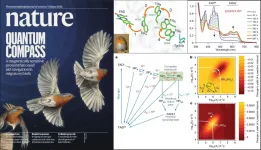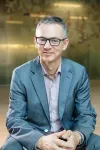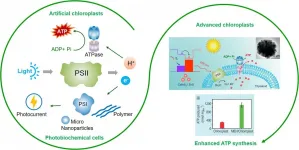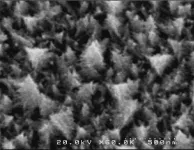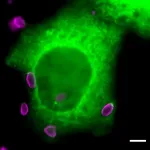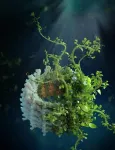Theoretical proof that a strong force can create light-weight subatomic particles
2021-06-24
(Press-News.org) Using only a pen and paper, a theoretical physicist has proved a decades-old claim that a strong force called Quantum Chromo Dynamics (QCD) leads to light-weight pions, reports a new study published on June 23 in Physical Review Letters.
The strong force is responsible for many things in our Universe, from making the Sun shine, to keeping quarks inside protons. This is important because it makes sure that the protons and neutrons bind to form nuclei of every atom that exists. But there is still a lot of mystery surrounding the strong force. Einstein's relation E=mc2 means a strong force leads to more energy, and more energy means a heavier mass. But subatomic particles called pions are very light weight. Otherwise nuclei would not bind, there would be no atoms other than hydrogen, and we wouldn't exist.
Why?
When quarks were discovered experimentally by striking them out of a proton with energetic electrons, scientists came up with the "explanation" that a property of the strong force called confinement was imprisoning quarks, preventing them from being observed directly. However, the mystery remained that no one could give theoretical proof that derived confinement from QCD.
Late Nobel Laureate Yoichiro Nambu proposed a concept called "spontaneous symmetry breaking" was responsible for creating essentially massless particles equivalent to pions. That is why these pions are so light in weight (in the real world, small intrinsic mass of quarks does not create completely massless particles). But yet again, no one could demonstrate that the theory of the strong force, QCD, realizes the proposed spontaneous symmetry breaking.
So Kavli Institute for the Physics and Mathematics of the Universe (Kavli IPMU) Principal Investigator Hitoshi Murayama solved this problem using a version of the theory with a mathematically elegant enhancement called supersymmetry. Yet the real world does not have supersymmetry. Murayama approached the real world using a specific way of breaking supersymmetry called anomaly mediation that he proposed back in 1998.
In doing so, Murayama managed to show that QCD indeed leads to very light-weight pions, something that had been suggested by numerical simulations with supercomputers, but technically impossible with massless quarks to definitively answer the question.
"I always hoped to understand how the strong nuclear force works so that we can exist. I'm very excited that I managed to prove Nambu's theory from QCD that has been so difficult for decades. This is a part of my long quest why we exist. Physics may not be too far away from answering this millennia-long question," said Murayama.
The study may open up new avenues to the study dynamics of non-supersymmetric gauge theories.
INFORMATION:
[Attachments] See images for this press release:
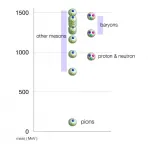
ELSE PRESS RELEASES FROM THIS DATE:
2021-06-24
Recently, a collaboration of researchers from the Hefei Institutes of Physical Science (HFIPS), Universities of Oldenburg (Germany) and Oxford (UK) have been gathering evidence suggesting that a specific light-sensitive protein in the eye named cryptochrome 4 is sensitive to magnetic fields and plays essential roles in magnetic sensing in migratory birds such as European robins. The results have been published in Nature (https://doi.org/10.1038/s41586-021-03618-9) on June 23 and selected as the cover paper.
For the first time, first author XU Jingjing, a doctoral student in Mouritsen's research group at Oldenburg, with the help of XIE's group, produced cryptochrome 4 in night-migratory ...
2021-06-24
BIRMINGHAM, Ala. - A bout with flu virus can be hard, but when Streptococcus pneumonia enters the mix, it can turn deadly.
Now researchers have found a further reason for the severity of this dual infection by identifying a new virulence mechanism for a surface protein on the pneumonia-causing bacteria S. pneumoniae. This insight comes more than three decades after discovery of that surface protein, called pneumococcal surface protein A, or PspA.
This new mechanism had been missed in the past because it facilitates bacterial adherence only to dead or dying lung epithelial cells, not to living cells. Heretofore, researchers typically used healthy lung ...
2021-06-24
Ultrasound can overcome some of the detrimental effects of ageing and dementia without the need to cross the blood-brain barrier, Queensland Brain Institute researchers have found.
Professor Jürgen Götz led a multidisciplinary team at QBI's Clem Jones Centre for Ageing Dementia Research who showed low-intensity ultrasound effectively restored cognition without opening the barrier in mice models.
The findings provide a potential new avenue for the non-invasive technology and will help clinicians tailor medical treatments that consider an individual's disease progression and cognitive decline.
"Historically, ...
2021-06-24
Are the traditional practices tied to endangered species at risk of being lost? The answer is yes, according to the authors of an ethnographic study published in the University of Guam peer-reviewed journal Pacific Asia Inquiry. But the authors also say a recovery plan can protect both the species as well as the traditional CHamoru practice of consuming them.
Else Demeulenaere, lead author of the study and associate director of the UOG Center for Island Sustainability, presented on their findings during the Marianas Terrestrial Conservation Conference on June 8.
Strong ...
2021-06-24
In the recent decade, scientists have paid more attention to studying light harvest for producing novel bionic materials or integrating naturally biological components into synthetic systems. Inspiration is the imitation of natural photosynthesis in green plants, algae, and cyanobacteria to convert light energy into chemical energy. Photosystem II (PSII) is a light-intervened protein complex responsible for the light harvest and water splitting to release O2, protons, and electrons. The development of PSII-based biomimetic assembly in vitro is favorable for the investigation of photocatalysis, biological solar cells, and bionic photosynthesis, further help us reveal more secret of photosynthesis.
The combination of PSII and artificially synthetic structures is successful for ...
2021-06-24
Ishikawa, Japan - Nanostructured metal surface has novel physical and chemical properties, which have sparked scientific interest for heterogeneous catalysis, biosensors, and electrocatalysis. The fabrication process can influence the shapes and sizes of metal nanostructures. Among various fabrication processes, the electrochemical deposition technique is widely used for clean metal nanostructures. Applying the technique, a team of researchers led by Dr. Yuki Nagao, Associate Professor at Japan Advanced Institute of Science and Technology (JAIST) and Md. Mahmudul Hasan, a PhD student at JAIST, succeeded to construct Pd-based catalysts having unique morphology.
In this study, the team has successfully synthesized Christmas-tree-shaped palladium nanostructures on the GCE ...
2021-06-24
Toxoplasma gondii, the parasite responsible for toxoplasmosis, is capable of infecting almost all cell types. It is estimated that up to 30% of the world's population is chronically infected, the vast majority asymptomatically. However, infection during pregnancy can result in severe developmental pathology in the unborn child. Like the other members of the large phylum of Apicomplexa, Toxoplasma gondii is an obligate intracellular parasite which, to survive, must absolutely penetrate its host's cells and hijack their functions to its own advantage. Understanding how the parasite manages to enter host cells offers new opportunities to develop more effective prevention and control strategies than those currently available. A team from the University of Geneva (UNIGE), in collaboration ...
2021-06-24
An international study led by Helmholtz Zentrum München has revealed the structure of a membrane-remodeling protein that builds and maintains photosynthetic membranes. These fundamental insights lay the groundwork for bioengineering efforts to strengthen plants against environmental stress, helping to sustaining human food supply and fight against climate change.
Plants, algae, and cyanobacteria perform photosynthesis, using the energy of sunlight to produce the oxygen and biochemical energy that power most life on Earth. They also adsorb carbon dioxide (CO?) from the atmosphere, counteracting the accumulation of this greenhouse gas. However, climate change ...
2021-06-24
Men - more often than women - need passion to succeed at things. At the same time, boys are diagnosed as being on the autism spectrum four times as often as girls.
Both statistics may be related to dopamine, one of our body's neurotransmitters.
"This is interesting. Research shows a more active dopamine system in most men" than in women, says Hermundur Sigmundsson, a professor at the Norwegian University of Science and Technology's (NTNU)Department of Psychology.
He is behind a new study that addresses gender differences in key motivating factors for what it takes to become good at something. The study uses men's and women's differing activity in the dopamine system as an explanatory model.
"We looked at gender differences around passion, self-discipline ...
2021-06-24
Researchers from Skoltech and their colleagues have shown that adaptation to similar environments hardly involves similar genomic positions when species are distantly related. The team investigated recurrent adaptations of wildlife birds' mitochondria to high altitude, migration, diving, wintering, and flight. Repeatable substitutions are rather a coincidence than adaptation, which confirms the scientific opinion that distant species "choose" different ways of similar trait evolution. The paper was published in the journal Genome Biology and Evolution.
If an organism wants to survive in unusual conditions, such as oxygen starvation typical for high altitudes or elevation of metabolism rate due to extreme temperatures, it has to adapt. If different species meet similar environment ...
LAST 30 PRESS RELEASES:
[Press-News.org] Theoretical proof that a strong force can create light-weight subatomic particles

